Let me introduce you to a couple of special guests that recently visited the museum; Eric and Marjory Littler. They share a rather unique connection to the museum’s collections.

Eric’s connection goes back 86 years. In 1935, aged 12 years old, he saw the massive KF7 class locomotives outside Vulcan Foundry works in Newton-le-Willows waiting to be exported to China. In awe at the engine’s size, Eric resolved to pursue a career building engines at Vulcan. One of those KF7 engines returned to the UK in 1983 and can be found in the museum’s Great Hall.
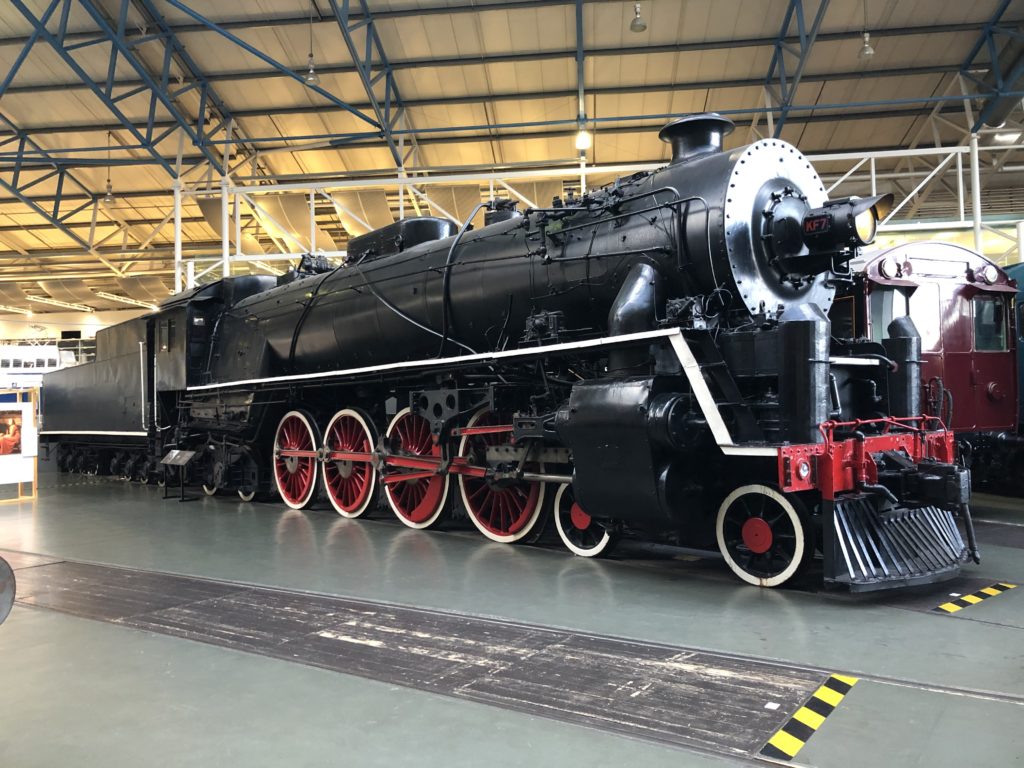
A few years later, Eric started working in the drawing office at the Vulcan works as an apprentice draughtsman, the start of a long career at the locomotive manufacturers in which he produced thousands of drawings for the company. The Vulcan Foundry later merged into the English Electric company, building diesel and electric locomotives used by both British Railways and exported to railway companies around the world.
As Eric’s career progressed he became chief draughtsman, managing the team of draughtsmen that produced locomotive designs at Vulcan Foundry. Later he was promoted to project manager, travelling the world with the locomotives to hand them over to their customers. Eric recalled fond memories of his visit to Seoul for the delivery of trains for the city’s metro system.
The General Electric Company (GEC) archives, which includes over a hundred thousand drawings from GEC and its predecessors like the Vulcan Foundry in Newton-le-Willows, is one of the largest collections in the Search Engine Library and Archives. Hunting through a few rolls of drawings from Vulcan Foundry on his visit, Eric was very pleased to find some of the drawings he had made decades before. One of the drawings that Eric found was this general arrangement drawing for a 1000HP diesel locomotive:
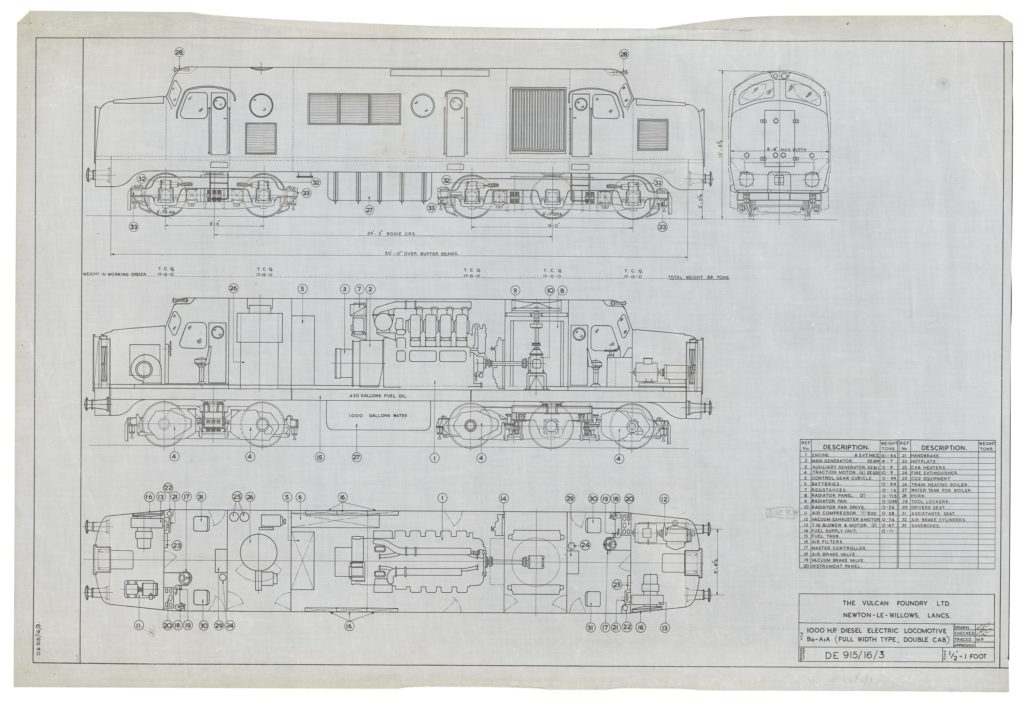
*There’s a little more to the history of this drawing – read on to the end to find out.
However, Eric was not the only member of the family hunting for their drawings during the visit to the museum. Marjory started working for Vulcan in 1947 when she was fresh out of school at the age of 16. Whilst Eric was a draughtsman, Marjory was a tracer.
Tracers had an important role in the operation of drawing offices. Before the designs produced by engineers could become reality their drawings needed to be given to workers across many different parts of the locomotive works. The instructions in those drawings would then be used to produce the thousands of components that make up a locomotive. Of course, this required many copies of the drawings to be made and distributed. This was the role of the tracers.
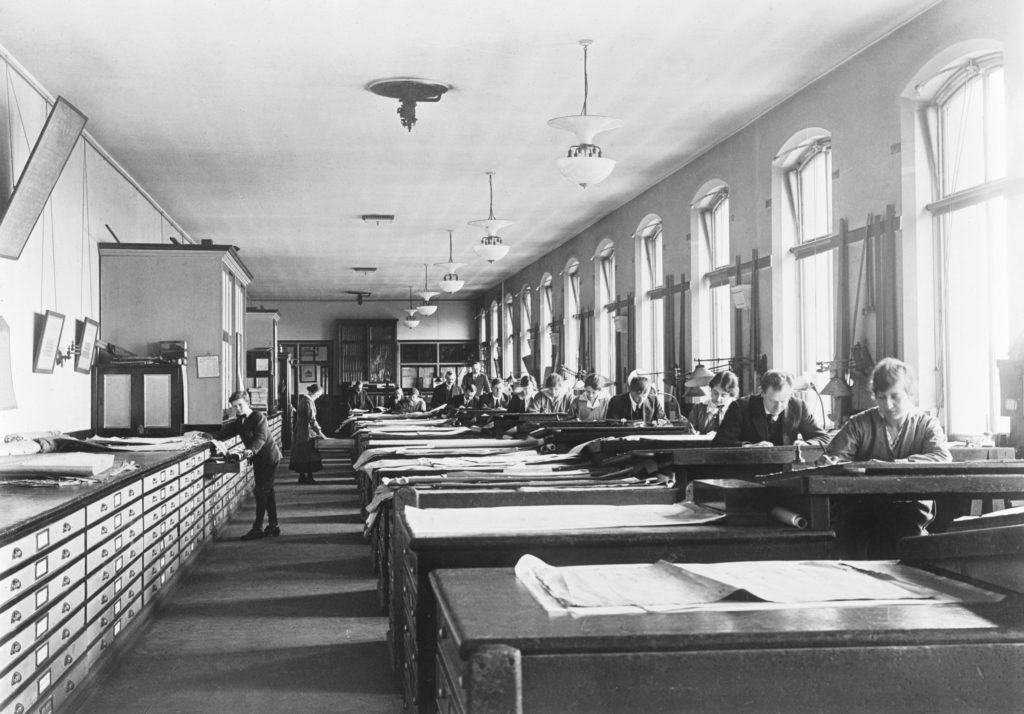
1997-7059_HOR_F_2216
In the 1860s drawing offices began adopting the process of blueprinting. This process took advantage of early advances in photography to make copies of drawings. Paper which was soaked in the light sensitive chemicals ferric ammonium citrate and potassium ferricyanide would turn blue when exposed to light. When a bright light was shone through a drawing onto the light sensitive paper, that paper would turn blue except where the ink in the lines of the drawing blocked the light, producing a negative copy of the drawing that could be sent to whoever needed it. However, for this process to work, the work of the draughtsmen had to be traced onto a translucent sheet, usually made from tracing paper or waxed linen. These traced copies could be used repeatedly to make blueprints whenever needed. Therefore, it was these master-copies that were retained, whilst the draughtsmen’s original work was often disposed of after a short while.

The role of a tracer was highly skilled, but perceived to be less technical than the draughtsmen’s work. Just as secretarial work became a female dominated profession due to misogynistic attitudes, women also began to be employed as tracers, a process that was accelerated by the First World War. However, since it was the tracers that produced the master-copies that were retained by the drawing offices, it is worth remembering that the majority of the drawings that now survive in the museum’s collections were penned by women and not men.
When Marjory started working at Vulcan, she was one of 10 girls working as tracers in the office. She still remembers her first day, 4th August 1947, and meeting Eric, sat with two of his friends in the canteen. Her friendship with Eric bloomed and in 1958 they were married. Whilst Eric’s career was progressing, Marjory was also promoted to Head Tracer, managing the rest of the office.
Back in the museum’s archives, it did not take long for Marjory to find one of the drawings that she had traced decades earlier. It was a pipe arrangement for a pantograph on an electric locomotive for RENFE and exported to Spain. The pantograph was the equipment used by the locomotive to collect electricity from overhead wires, and the pipes drawn by Marjory were used to control its position so that it could be raised and lowered.
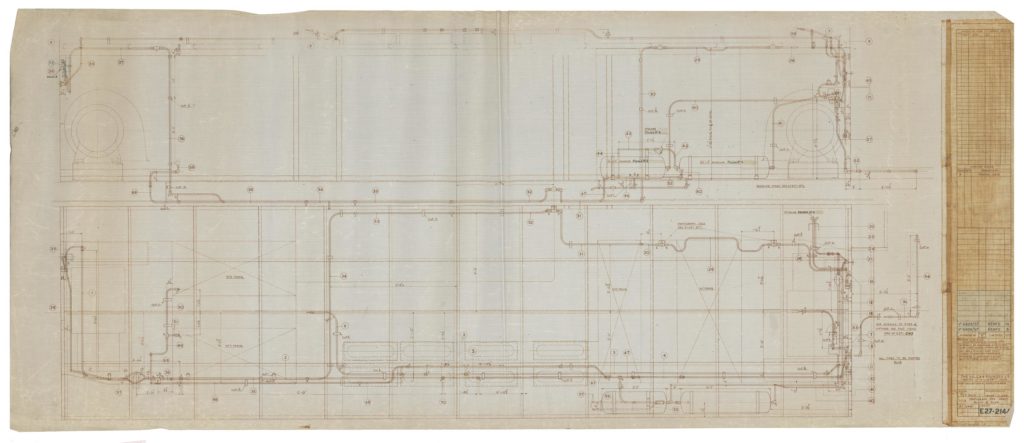
©Alstom/National Railway Museum collection reference:
GEC/2/2/5/32/E27-2144
For two centuries, drawing offices were the centres in which every facet of Britain was designed. From railways and buildings to furniture and kitchen appliances, everything began its life as a design on a piece of paper. It’s easy to understand the significance of drawing offices to the story of a nation but much harder to see the hidden significance they held for the people that worked in them. For Marjory and Eric, the Vulcan Foundry drawing office was not just the place that they made their careers, it’s where they found their love from which they created their family. Not only do their drawings now reside at the National Railway Museum, so too their granddaughter Caroline now works at the museum too.
If you’re interested in the history of railways and engineering drawing, check out the book Railways: A History in Drawings by Christopher Valkoinen and published by Thames and Hudson in association with the museum.
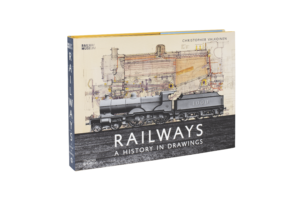
*And finally, a little more about Eric’s drawing. Unfortunately Eric does not remember if that locomotive was actually built or who it was for. Nor have we been able to find any references to it. The style of the design suggests it was for export, for example, some features like the porthole windows were common on English Electric engines that were sent abroad but were rare on engines for British Railways. However, some of the engine’s technical features (it is standard gauge, it fits the UK loading gauge and it has vacuum brakes and steam heating) suggest it might have been designed for use in Britain and never built. At the moment we cannot be sure what this engine was for, but if you have any ideas, please share them in the comments.

It seems clear that the A1A-Bo locomotive was intended to be a “Type B” counterpart to English Electric’s “Type A” (Class 20) and “Type C” (Class 40) entries in the Modernisation Plan Pilot Scheme. Many of the major parts are in common with the Class 20, which would have simplified maintenance if it had ever been built, and the Class 20 was notably reliable in service.
The 1000hp prime mover neatly bestrides the top end of the Type A (later Type 1) specification and the bottom end of the Type B (later Type 2) specification. The key differences between these specifications were that Type A called for a single cab (more convenient for shunting operations, which a light goods locomotive would be doing much of) and minimum capital cost, while Type B called for two cabs (for better visibility in passenger service) and a steam-heating boiler. The extra idler axle designed into the Type B would support the considerable extra weight of the boiler and its water supply, without increasing the overall load per axle.
In the event, English Electric entered a slightly more powerful locomotive based on a 9-cylinder Deltic engine under Type 2. This Class 23 “Baby Deltic” proved to be very unreliable and difficult to maintain, so unsurprisingly it was withdrawn from service in favour of various Sulzer-engined Type 2s. However, many details of the Class 23 are identifiable in the A1A-Bo drawing.
It’s worth considering how a mid-life refit of the A1A-Bo might have gone, at around the time that the Class 37/4 was produced. The 37 started with a 12CSVT engine, offering more power per cylinder than the 8SVT of the Class 20 via charge-air cooling. If the A1A-Bo had its boiler removed, water tank converted to a fuel tank, and the 8SVT prime mover and main generator replaced by an 8CSVT and main alternator, this would have resulted in a significant increase in available power at the rail and range before refuelling, in addition to ETH supply replacing steam heat. Perhaps we would have seen these quirky but useful machines top-and-tailing Wherry Lines trains in recent years, instead of 37s.
Drawing instruments in the days of tracing onto waxed linen were ruling pens for straight lines and nibs for lettering.
I was a draughtsman and as part of my training was to trace a drawing on waxed linen.
I remember the ruling pens used to clog up with the wax and had to be regularly cleaned.
It was only a small drawing but made me appreciate the skill of the tracers who did the large drawings, they were very skilled.
PS. I also married a tracer as did a couple of others in the office.
I wonder why the preference for waxed linen over starched linen? I now catalogue ship plans and different yards had their preference. Every yard I worked in used linen (then plastic).